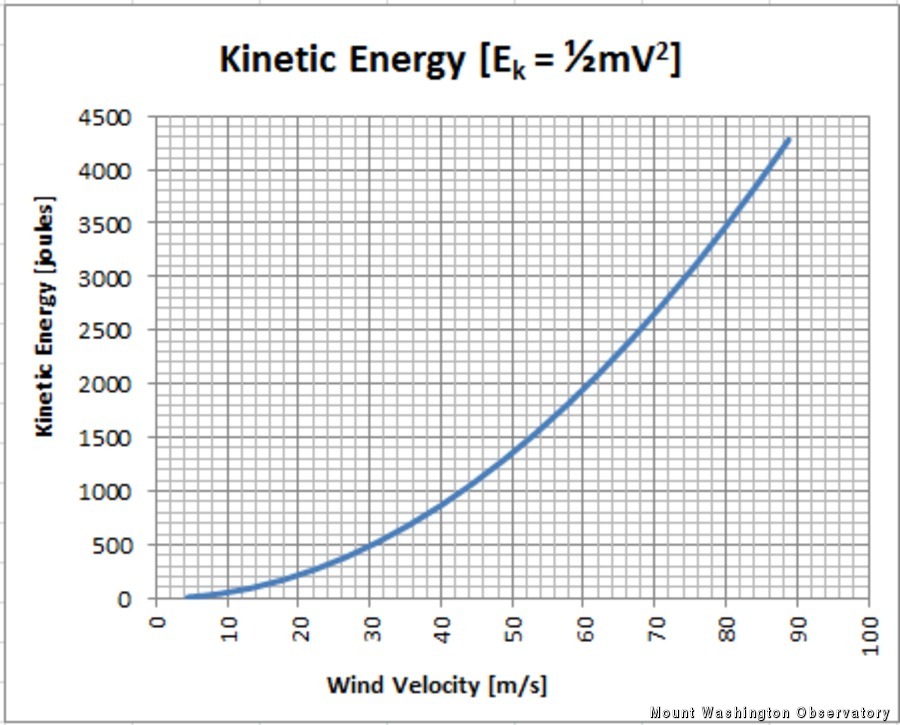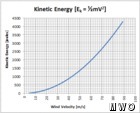The Wind Force Factor
2012-01-13 23:44:01.000 – Rick Giard, Weather Observer / Education Specialist
Wind Kinetic Energy
Folks who visit the summit for the first time are often unaware of the tremendous force with which high wind speeds can impact the body. They frequently overestimate the actual wind based on the feeling that they are being buffeted and thrown about. High wind speeds experienced for a short time can be fun and exhilarating. However, a hiker on the trail with gear, enduring the impact of high winds for a period of time, can quickly become exhausted. This is a hazard to be taken seriously.
Although air has a substantial amount of mass, this is not evident until it begins moving. When any object moves it acquires kinetic energy equivalent to the amount of work required to accelerate from rest to its current speed. Conversely, the same amount of work is needed to decelerate the object back to the resting state. This is demonstrated by the fact that automobiles traveling at twice the speed will require four times the distance to stop. Although air acts more like a compressible fluid, we can simplify the discussion for our purposes by assuming a rigid, non-rotating object.
Air changes density (mass per unit volume) with elevation (pressure), temperature and relative humidity. Currently the air at summit level (1917 meters) is -16 degrees Celsius (+3 F) and 100% RH. Under these typical conditions air density is approximately 1.085 kilograms per cubic meter. Using the kinetic energy equation from classical mechanics (click on chart above), kinetic energy equals one-half times mass times velocity squared. Thus, energy grows at an exponential rate as velocity increases. In the graph above I have plotted kinetic energy versus velocity, showing the dramatic increase with wind speeds ranging from 10 to 200 MPH (4 to 89 meters per second). Observe that each time the velocity doubles, the kinetic energy quadruples.
At our current conditions and wind speed this evening (just over 100 MPH sustained), each cubic meter of air impacts your body with nearly 1100 joules of kinetic energy. Our peak gust of 122 MPH last week packed in excess of 1500 joules per cubic meter – a tremendous force to reckon with atop the instrument tower!
Rick Giard, Weather Observer / Education Specialist
Supporter Spotlight: Ryan Shepard
Supporter Spotlight: Ryan Shepard By Ryan Shepard and Carissa Milliman Ever since I was a kid, living in Western New York and growing up with lake effect snow, I thought harsh weather was incredibly
Supporter Spotlight: Erik Rider
Supporter Spotlight: Erik Rider By Wendy Almeida For Erik Rider, supporting Mount Washington Observatory comes from a lifelong fascination with weather and how it shapes daily life. Growing up along the Massachusetts coast, he
An Autumn Above the Clouds on Mount Washington
An Autumn Above the Clouds on Mount Washington By Cassie Farnsworth I don’t know how many times in life you get to say “it was exactly what I hoped it would be,” but my




